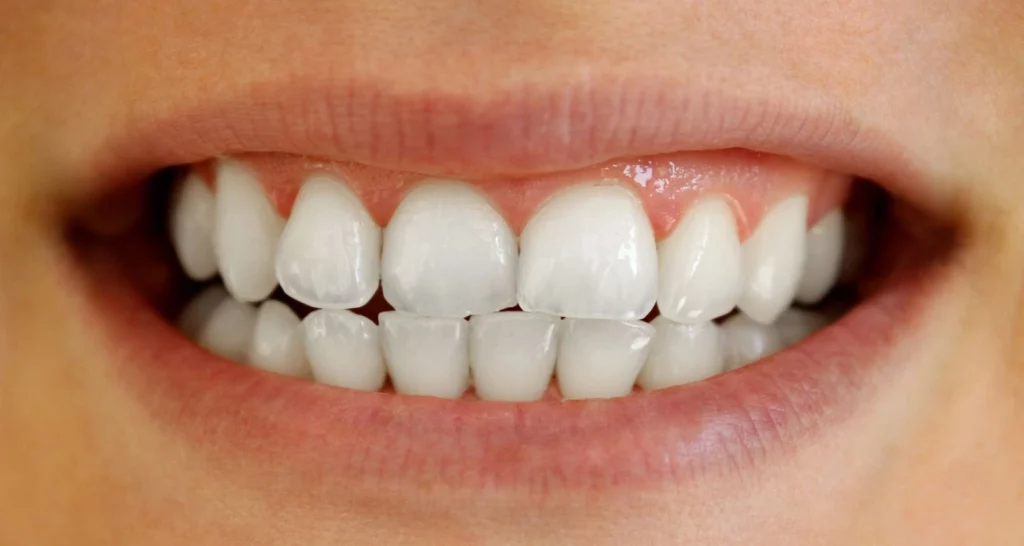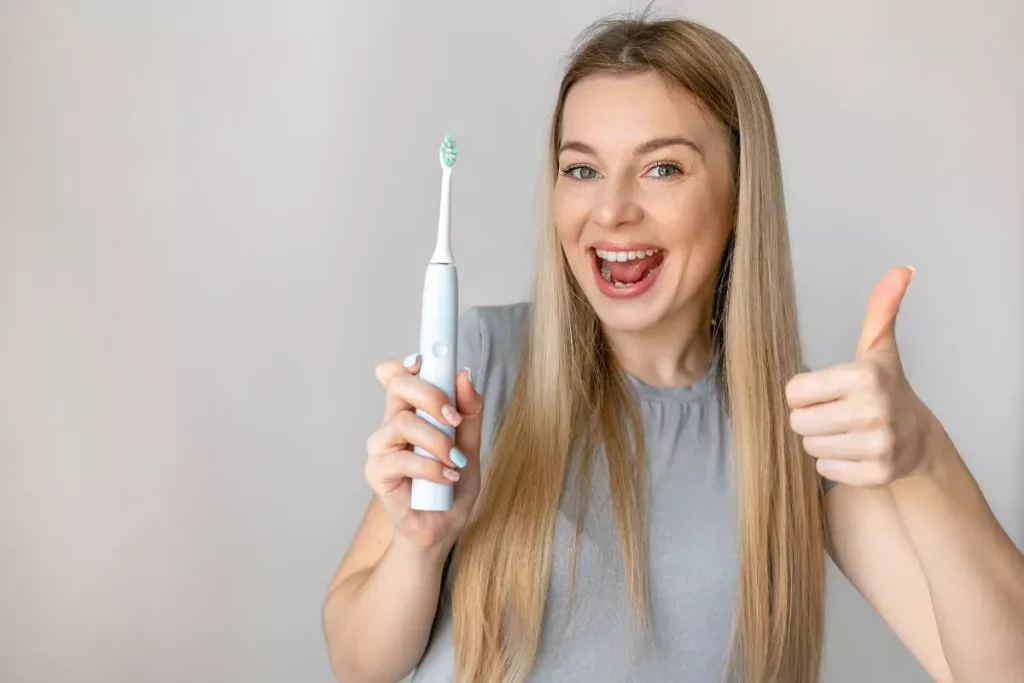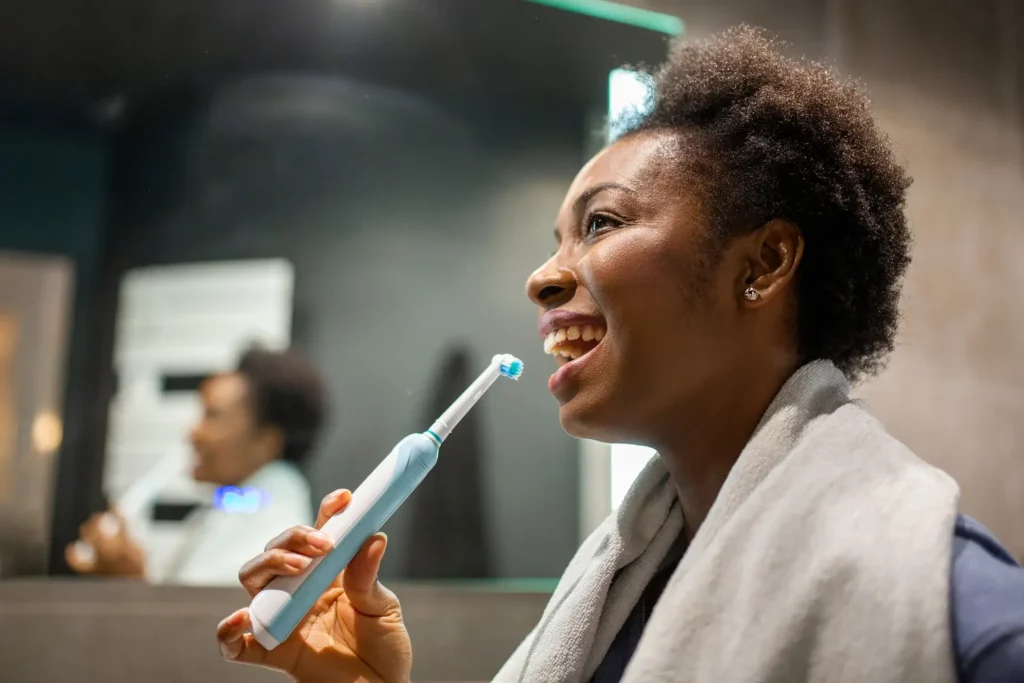What is Teeth Contouring?
Some tooth imperfections can affect our well-being and even food intake. Those that affect oral health can be addressed with fast treatment alternatives that provide good results at an affordable cost. One of these options is tooth contouring.
It is a cosmetic dentistry procedure that improves the appearance of the teeth.
This dental rehabilitation technique – also known as dental remodeling or odontoblasts – is used to correct different dental problems such as crooked, chipped, or broken teeth, to modify the shape and size of the teeth, to change the appearance of uneven teeth or those with jagged edges, as well as rounding off the tips or smoothing out sharp corners.
How is the Contouring of the Teeth Done?
In the procedure, some dental enamel is reduced. However, it is not invasive and does not require anesthesia, since the amount of dental enamel to be removed is minimal.
From an initial diagnosis through X-rays, the dentist identifies the teeth that need to be intervened and marks them with the help of a laser instrument or a dental bur.
After establishing the clinical picture of the intervention, instruments are used to model the teeth and remove small amounts of enamel to improve the appearance, shape, or position of the dental piece. Sometimes, it is necessary to apply adhesive resin.
The reshaping procedure ends with a dental polish to smooth any rough or sharp edges and to ensure that the teeth look and feel natural.
It is important to note that dental reshaping requires some aftercare and is not a permanent procedure. With time, the teeth will present natural wear, and it will be necessary to apply other treatments.
After the procedure, the patient must practice good oral hygiene and avoid foods or drinks that stain the teeth or have a very hard consistency.
This therapeutic rehabilitation alternative is pertinent in the treatment of mild dental imperfections. If a major correction is required, other dental treatments should be considered, such as veneers or crowns.
Who can have teeth contouring?
Although dental remodeling can significantly improve the appearance of the teeth, not all people are candidates for the procedure.
One condition that must be met is healthy teeth and gums. If there are cavities, diseased gums, or infected pulp, it is not possible to recommend the treatment. It is required to have healthy teeth, free of dental diseases. In other words, a good oral health condition.
Another requirement is the condition of the dental enamel, the basis of the entire procedure. If the enamel is weak or very thin, this therapeutic option of dental remodeling or contouring is not suggested.
The possibility of applying dental reshaping to improve the appearance of the smile also depends upon the size and location of the pulp, the blood vessels, and the nerves.
Frequently, the dentist requests dental X-rays to determine the appropriateness of the procedure. Before undergoing such a dental reshaping procedure, it is necessary to treat any existing dental lesions, such as cavities or gum disease.
Tooth contouring is recommended to treat the following conditions:
• Chipped or cracked teeth.
• Teeth with different lengths.
• Sharp teeth.
• When a slight overlap of teeth is registered
• When one tooth is larger or wider than the other
People who suffer from bruxism are not suitable candidates for this dental rehabilitation alternative, since the removal of portions of dental enamel will intensify the effects of this habit or behavior, generating greater wear on the teeth.
What are the Benefits of Dental Contouring?
Dental remodeling offers different benefits, such as being a quick and simple procedure that can be performed during a single consultation.
Other advantages of this therapeutic alternative are:
• Low-cost
• Eliminates irregular edges and reduces the accumulation of bacterial plaque and the risk of dental diseases. In short, it improves oral health.
• It is a non-invasive procedure.
• The treatment can be tailored to the needs and expectations of each person.
• It allows the correction of small imperfections in the teeth.
• It replaces orthodontics, by eliminating a minor overlap, avoiding the use of brackets and other devices.
What Risks and Side Effects does Tooth Contouring have?
Although dental contouring is a simple procedure, there are some risks and side effects:
• Temporary tooth sensitivity when consuming hot/cold food or drinks.
• Decreases the thickness of tooth enamel, which can cause tooth sensitivity long term.
• If the procedure is performed excessively or incorrectly, there will be an imbalance in the shape and size of the teeth, affecting the bite and other dental functions.
Tooth Contouring and other Treatment Alternatives
Cosmetic dentistry offers alternatives other than dental contouring or remodeling to treat other dental health conditions.
It is important to keep in mind that dental contouring facilitates the correction of minor imperfections, such as chipped teeth or teeth with irregular edges. For other situations, it may be necessary to resort to other therapeutic options.
• Teeth whitening focuses on clarifying the color of the teeth, eliminating stains and discolorations.
• Dental veneers are an option to modify the appearance of the teeth. Through Teeth Contouring, natural enhancements are achieved as delicate porcelain sheets are bonded to the tooth’s frontal area, effectively rectifying aesthetic flaws. This method proves effective in addressing concerns such as altering tooth color, reshaping, and resizing, resulting in a harmonious and organic transformation.
How to Prepare for Tooth Contouring?
Before dental remodeling, it is recommended to prepare and thus facilitate the rehabilitation procedure.
• It is necessary to have an initial consultation with the dentist to assess the patient’s oral health condition and discuss expectations and results.
• According to the expectations and needs of the person, it is recommended to evaluate other cosmetic options.
• Before the procedure, the dentist will give instructions that must be followed. It may be necessary to avoid the consumption of certain foods or medicines.
• It is vital to maintain good oral hygiene practices before and after the procedure.
Dental Contouring: A Quick but Impermanent Option
Dental remodeling is a safe and effective therapeutic and cosmetic option to improve the appearance of the smile and oral health. However, with the passage of time and natural wear of the teeth, it may be necessary to consider other treatments.
Dental contouring can be combined with other treatments such as whitening or the use of veneers.
To avoid the risks associated with this procedure, it is very important to consult a qualified dentist, who will make the corresponding assessment and determine if the patient can undergo dental contouring or another appropriate therapeutic option, depending upon the person’s health.
Frequently Asked Questions
Is dental contouring expensive?
According to the American Association of Cosmetic Dentistry, the cost of a dental contouring treatment (also known as reshaping) typically ranges from $50 to $300 per tooth before insurance coverage.
What are the drawbacks of dental contouring?
After the intervention, some patients may experience dental sensitivity as a possible side effect. There is a risk of tooth breakage if an excessive amount of enamel is removed during the process. In certain situations, dental contouring alone may not be enough, requiring the combination of another procedure, such as bonding, to achieve the desired result.
Tooth Contour Quiz: True or False
1. True or false: Dental contouring is extremely comfortable, which means you will most likely not need anesthesia: TRUE. This cosmetic treatment is gentle, so most patients do not require anesthesia. Please note that your comfort is a priority. The dentist will monitor how you feel and make any necessary adjustments.
2. True or false: We can add length to your teeth or seal gaps with contouring for a prettier smile: False. If you want a treatment that provides additional dental tissue to achieve your desired smile, it is wise to explore dental bonding. However, if you are looking for a method to reduce tissue, then contouring is the right option for you. Using a soft polishing instrument, the dentist will meticulously remove minute amounts of the outermost layer of your teeth, known as enamel to reshape individual teeth. This can significantly improve the appearance of your smile.
3. True or false: Contouring is a great way to make small changes, such as to even out your smile line or smooth out a pointy tooth: TRUE. If your smile appears asymmetrical due to uneven teeth, the dentist can reduce those that are longer than the rest. Alternatively, if your teeth appear jagged or pointy, dental contouring is an excellent option to smooth any rough areas.
Share:
References
1. Adilson Yoshio Furuse, Leonardo Fernandes da Cunha, Pontons Juan Carlos, Benetti Raquel, Mondelli José (Diciembre 2009). Refurbishment Cosmética de la Sonrisa – Acta Odontológica Venezolana / http://ve.scielo.org/scielo.php?script=sci_arttext&pid=S0001-63652009000400025
2. Lebreault José (February 11, 2022). 18 Pros And Cons Of Dental Contouring And Reshaping https://proyectovidaplena.com/18-pros-y-contras-del-contorneado-y-remodelado-dental/
3. Sheehan Jan (Agosto 19 de 2009). Tooth Reshaping and Dental Contouring / https://www.everydayhealth.com/dental-health/cosmetic-dentistry/tooth-reshaping.aspx
4. Valencia Higuera (Marzo 12 de 2019) The ‘Tooth’ About Teeth Reshaping / https://www.healthline.com/health/dental-and-oral-health/teeth-reshaping
-
Nayibe Cubillos M. [Author]
Pharmaceutical Chemestry |Pharmaceutical Process Management | Pharmaceutical Care | Pharmaceutical Services Audit | Pharmaceutical Services Process Consulting | Content Project Manager | SEO Knowledge | Content Writer | Leadership | Scrum Master
View all posts
A healthcare writer with a solid background in pharmaceutical chemistry and a thorough understanding of Colombian regulatory processes and comprehensive sector management, she has significant experience coordinating and leading multidisciplina...


















